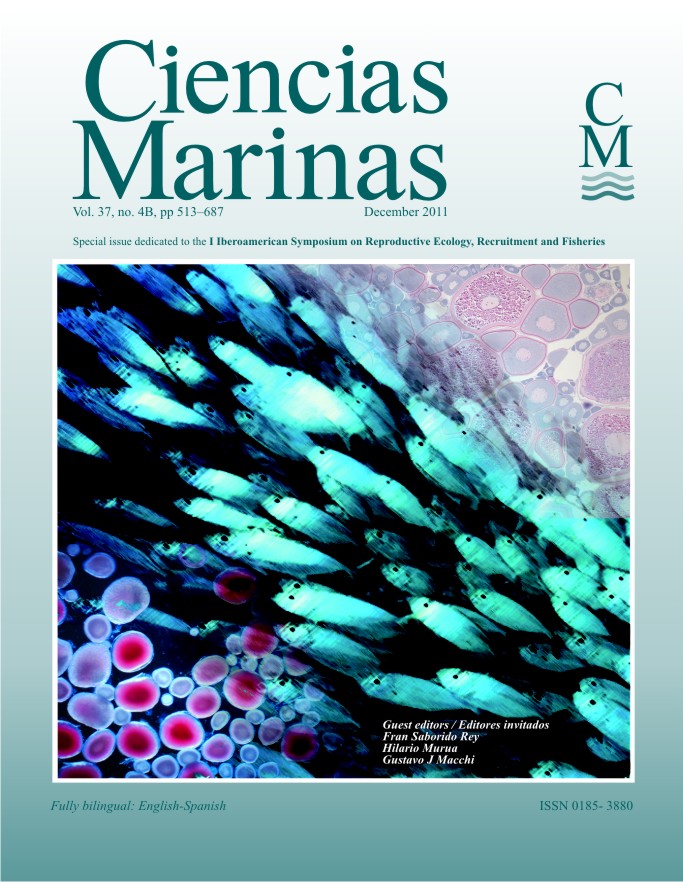Reproductive biology of black hakes (Merluccius polli and M. senegalensis) off Mauritania
Main Article Content
Abstract
Black hake, Merluccius polli and M. senegalensis, are demersal species that inhabit the continental shelf and upper slope off Morocco, Mauritania, and Senegal, and are targeted by Spanish trawlers and bottom longliners. Merluccius senegalensis generally occurs at shallower depths than M. polli, although both species share a wide bathymetric range. Due to their external resemblance and overlapping occurrence at certain depths, both species are mixed in catches and are commonly marketed as Merluccius spp. From 2003 to 2009 biological samplings were performed in Mauritanian waters for numerous specimens of M. polli and M. senegalensis during 15 commercial fishing trips, seven experimental longline surveys, and three trawl surveys carried out within the black hake depth range and mainly during their reproductive periods. Data sets for 1334 fishing stations were thus gathered. The georeferenced macroscopic analysis of the female-assigned maturity stages was combined with the monthly evolution of the gonadosomatic index and with the time series of roe landings from 1984 to 2006 to determine the potential spawning areas, depths, and seasons for both species, showing an intense spawning period from November to February. Size at first maturity was estimated for both species in separate spawning periods and was higher for M. polli females (44 cm) than for M. senegalensis females (39 cm). Sex ratios were also determined by length classes (1 cm) for the experimental survey data and were analyzed according to fishing gear and latitude. The results showed a general predominance of females throughout the depths explored, both for M. polli (1:1.7) and M. senegalensis (1:1.5). Histological samples of ovaries and spawning progression data were jointly analyzed and indicated an apparent spawning delay for the deeper hake, M. polli (October), in comparison with the shallower hake, M. senegalensis (September).
Downloads
Article Details
This is an open access article distributed under a Creative Commons Attribution 4.0 License, which allows you to share and adapt the work, as long as you give appropriate credit to the original author(s) and the source, provide a link to the Creative Commons license, and indicate if changes were made. Figures, tables and other elements in the article are included in the article’s CC BY 4.0 license, unless otherwise indicated. The journal title is protected by copyrights and not subject to this license. Full license deed can be viewed here.

